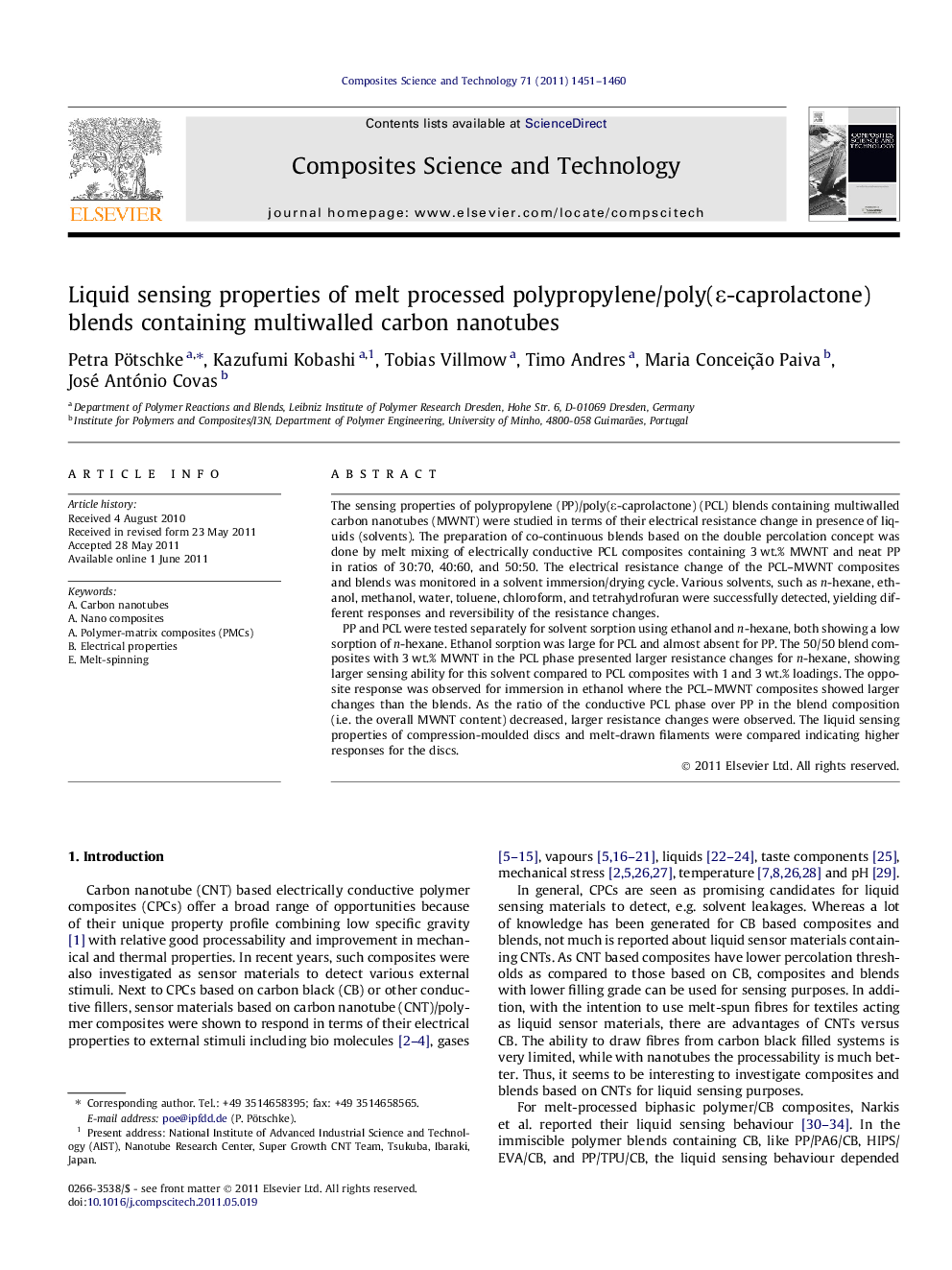| Article ID | Journal | Published Year | Pages | File Type |
|---|---|---|---|---|
| 820993 | Composites Science and Technology | 2011 | 10 Pages |
The sensing properties of polypropylene (PP)/poly(ε-caprolactone) (PCL) blends containing multiwalled carbon nanotubes (MWNT) were studied in terms of their electrical resistance change in presence of liquids (solvents). The preparation of co-continuous blends based on the double percolation concept was done by melt mixing of electrically conductive PCL composites containing 3 wt.% MWNT and neat PP in ratios of 30:70, 40:60, and 50:50. The electrical resistance change of the PCL–MWNT composites and blends was monitored in a solvent immersion/drying cycle. Various solvents, such as n-hexane, ethanol, methanol, water, toluene, chloroform, and tetrahydrofuran were successfully detected, yielding different responses and reversibility of the resistance changes.PP and PCL were tested separately for solvent sorption using ethanol and n-hexane, both showing a low sorption of n-hexane. Ethanol sorption was large for PCL and almost absent for PP. The 50/50 blend composites with 3 wt.% MWNT in the PCL phase presented larger resistance changes for n-hexane, showing larger sensing ability for this solvent compared to PCL composites with 1 and 3 wt.% loadings. The opposite response was observed for immersion in ethanol where the PCL–MWNT composites showed larger changes than the blends. As the ratio of the conductive PCL phase over PP in the blend composition (i.e. the overall MWNT content) decreased, larger resistance changes were observed. The liquid sensing properties of compression-moulded discs and melt-drawn filaments were compared indicating higher responses for the discs.
